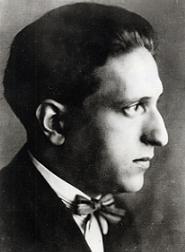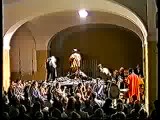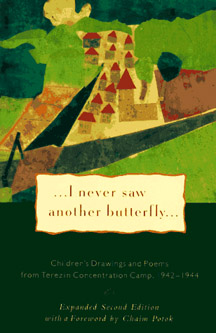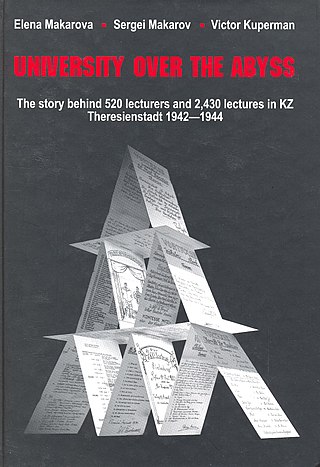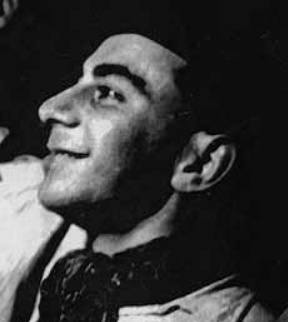This section needs additional citations for verification .(September 2017) |
The article's lead section may need to be rewritten.(September 2017) |

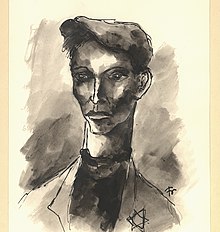
Theresienstadt was originally designated as a model community for middle-class Jews from Germany, Czechoslovakia, and Austria. Many educated Jews were inmates of Theresienstadt. In a propaganda effort designed to fool the western allies, the Nazis publicised the camp for its rich cultural life. In reality, according to a Holocaust survivor, "during the early period there were no [musical] instruments whatsoever, and the cultural life came to develop itself only ... when the whole management of Theresienstadt was steered into an organized course." [1]
Contents
The community in Theresienstadt tried to ensure that all the children who passed through the camp continued with their education. The Nazis required all camp children over a certain age to work, but accepted working on stage as employment. The prisoners achieved the children's education under the guise of work or cultural activity. Daily classes and sports activities were held. The community published a magazine, Vedem. The history of the magazine was studied and narrated by the Italian writer Matteo Corradini in his book La repubblica delle farfalle (The Republic of the Butterflies). Sir Ben Kingsley read that novel, speaking on 27 January 2015 during the ceremony held at Theresienstadt to mark International Holocaust Memorial Day.[ citation needed ]
Ilse Weber, a noted Czech Jewish poet, writer and musician for children, was held in the camp from February 1942, and worked as a night nurse in the camp's children's infirmary. She volunteered to join a transport of children to Auschwitz in November 1944, where she, her son Tommy, and all the children with her were murdered in the gas chambers immediately on arrival.[ citation needed ]
Conductor Rafael Schächter was among those held at the camp, and he formed an adult chorus. He directed it in a performance of the massive and complex Requiem by Giuseppe Verdi. Schächter conducted 15 more performances of the work before he was deported to Auschwitz-Birkenau. [2]
Violinist Julius Stwertka, a former leading member of the Boston Symphony Orchestra and co-leader of the Vienna Philharmonic, was murdered in the camp on 17 December 1942.[ citation needed ]
Pianist Alice Herz-Sommer (held with her son, Raphael Sommer) performed 100 concerts while imprisoned at Theresienstadt. She and Edith Steiner-Kraus, her friend and colleague, both survived the camp, emigrated to Israel after the war, and became professors of music, Herz-Sommer at the Jerusalem Academy of Music, and Steiner-Kraus at the Tel Aviv Academy of Music (now the Buchmann-Mehta School of Music). [3]
Martin Roman and Coco Schumann were part of the jazz band Ghetto Swingers. Artist and art teacher Friedl Dicker-Brandeis created drawing classes for children in the ghetto, among whom were Hana Brady ("Hana's suitcase").[ citation needed ] They produced more than 4,000 drawings, which she hid in two suitcases before she was deported to Auschwitz in the final liquidation. The collection was preserved from destruction, and was discovered a decade later. Most of these drawings can now be seen at the Jewish Museum in Prague, whose archive of the Holocaust section administers the Terezín Archive Collection. Others are on display at Yad Vashem in Jerusalem. The children of the camp also wrote stories and poems. Some were preserved and later published in a collection called I Never Saw Another Butterfly , its title taken from a poem by young Jewish Czech poet Pavel Friedmann. He had arrived at Terezín on 26 April 1942 and was later murdered at Auschwitz.
Painter Malva Schalek (Malvina Schalkova) was deported to Theresienstadt in February 1942. She produced more than 100 drawings and watercolours portraying life in the camp. On 18 May 1944, due to her refusal to paint the portrait of a collaborationist doctor, she was deported to Auschwitz, where she was murdered. [4]
Artist and architect Norbert Troller produced drawings and watercolours of life inside Theresienstadt, to be smuggled to the outside world. When the Gestapo found out, he was arrested and deported to Auschwitz, where he was liberated by the Russians in 1945. His memoirs and two dozen of his artworks were published in 1991. [5]
Composer Viktor Ullmann was interned in September 1942, and murdered in Auschwitz in October 1944. He composed some twenty works at Theresienstadt, including the one-act opera Der Kaiser von Atlantis (The Emperor of Atlantis or The Refusal of Death). It was planned for performance at the camp, but the Nazis withdrew permission when it was in rehearsal, probably because the authorities perceived its allegorical intent. The opera was first performed in 1975, and shown in full on BBC television in Britain. It continues to be performed.[ citation needed ]
Music composed by inmates is featured in Terezín: The Music 1941–44 , a two-CD set released in 1991. [6] [7] The collection features music composed mostly in 1943 and 1944 by Pavel Haas, Gideon Klein, Hans Krása, and Viktor Ullmann while interned at Theresienstadt. Haas, Krása, and Ullmann were murdered in Auschwitz concentration camp in 1944, and Klein was murdered in Fürstengrube in 1945. [8]
In 2007, the album Terezín – Theresienstadt of music composed at Theresienstadt was released by the Swedish singer Anne Sofie von Otter, assisted by baritone Christian Gerhaher, pianists, and chamber musicians. In 2008, Bridge Records released a recital by Austrian baritone Wolfgang Holzmair and American pianist Russell Ryan that drew on a different selection of songs.




